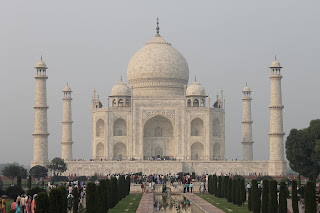As a frequent and passionate traveler, airports exude a certain charm and allure. Entering one sends fingers of thrills down my spine and sets my stomach swirling. It’s an amazing place, where an eclectic group of people are all gathered to do the same thing: travel. I love being in the presence of people who are going places I’ve only read about. My friend Mariana says her favorite thing about airports is the loved ones waiting for you at the airport at the opposite end.
But for all its attraction, its airplanes that I love the most. When going through a dry spell of travel, in which I can usually be found working and saving as much as possible in order to embark on my next journey, I sometimes look longingly to the sky at a tiny jet slinking away. I wonder where its going, and wish I could be on it despite its destination. Taking off and landing fill me with an unparalleled exuberance, whether I am going away or coming home.
Here's some final quotes that sum up some of my experience:
“India is just like a big, juicy fruitcake, and you must limit yourself to a slice at a time. It is killing, trying to tick off all the places [that] people and guidebooks talk about.”
Fodor’s India Guidebook
“Foreigners were stared at in India. Somewhere in the five or more millennia of its history, the culture had decided to dispense with the casual, nonchalant gaze. By the time I came to Bombay, the eye contact ranged from an ogling gaze to a gawping, goggle-eyed glare. There was nothing malicious in it. The staring eyes that found and followed me everywhere I went were innocent, curious, and almost always friendly.”
Shantaram, Gregory David Roberts
“There are four things motorist needs in India: good brakes, good horn, good reflexes, and good luck.”
Chasing the Monsoon, Alexander Frater
“My anger and disappointment began dissipating at once. India was teaching me a passive acceptance of the inevitable that had begun to make me faintly uneasy.”
Chasing the Monsoon, Alexander Frater
 |
| Radhika on the way to the lake |
 |
| All the kids on my last day |
 |
| saying goodbye |
 |
| Kavya |
 |
| Kavya and Roja |














































